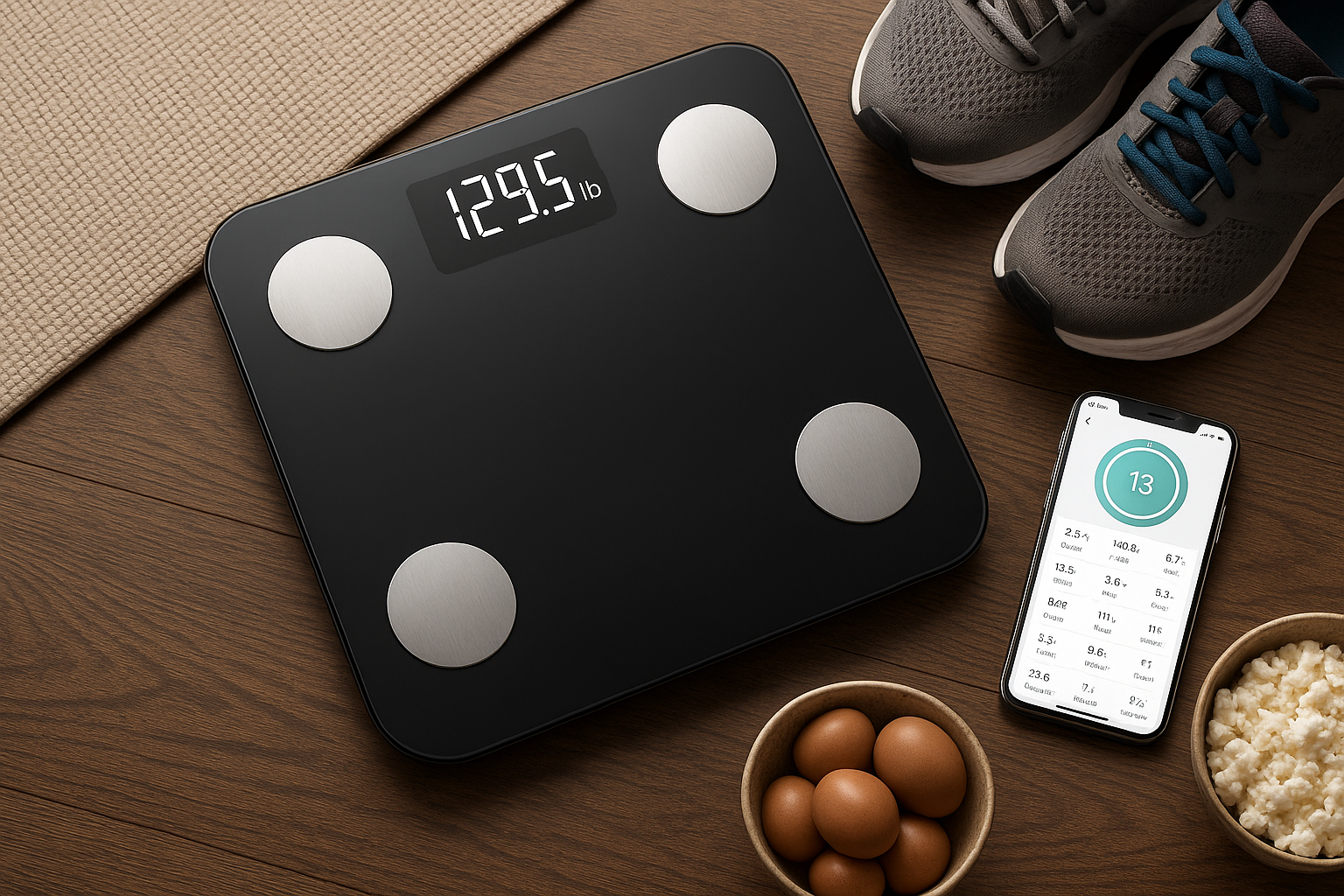What Is Body Recomposition?
Fat Loss + Muscle Gain Explained Simply
We often think of weight loss and muscle gain as two separate goals. Either you’re trying to lose weight, or you’re trying to bulk up. But there’s a third, smarter approach that’s becoming the gold standard for lasting body change — it’s called body recomposition.
Put simply, body recomposition means losing fat and gaining muscle at the same time.
The Basic Scale Doesn’t Tell the Full Story
Most of us were raised to believe that the number on the scale is the ultimate measure of fitness. But here’s the truth: you can weigh the same and look completely different — leaner, more toned, more energized — all because your body composition has changed.
Muscle is denser than fat. As you build lean muscle in your body over time and burn fat, your weight probably won’t change drastically, but your body shape, strength, and metabolic health will.
This is where recomposition becomes a game-changer.
My Recomposition Story
When I shifted from “just losing weight” to fueling muscle growth while trimming fat, everything clicked. I stopped relying on the scale for guidance and started focusing on strength, tone, and energy.
Now, I typically consume 100–120g of protein daily, with meals centered around lean proteins, fiber-rich vegetables, and healthy carbohydrates. The goal isn’t to eat less — it’s to eat smarter. This daily protein target helps support lean muscle tissue, especially as I get back into workouts after a break.
Over time, I noticed something surprising: I looked leaner, even when the scale didn’t move much. That’s recomposition in action.
What Does Recomposition Look Like?
You might be a perfect candidate for body recomposition if:
- You feel “skinny fat” — thin frame but lacking muscle tone
- You’ve lost weight, but still feel soft or weak
- You want to look leaner without following extreme diets or cardio routines
- You’re starting or returning to strength training
- Your focus is long-term body change, not quick fixes
This approach is beneficial for women who want to avoid bulky muscles but still desire definition, metabolic support, and strength.
The 4 Keys to Body Recomposition
You don’t need to be in a strict “bulk” or overly restrictive “cut.” Instead, you can fine-tune with these four levers:
1. Protein Intake
Protein builds and repairs muscle tissue. Without eating enough of it, your body can’t maintain or grow muscle, especially when you’re in a slight calorie deficit.
Aim for:
- 0.8 to 1g of protein per pound of goal weight
- Or roughly 100–130g daily for most women focused on recomposition
I personally aim for 100–120g of protein per day — it’s been one of the most potent tools in reshaping my body.
2. Strength Training
Cardio is excellent for heart health, but it won’t reshape your body. Recomposition relies on resistance training — bodyweight exercises, dumbbells, bands, or machines — to stimulate muscle growth.
You don’t have to live at the gym. Two to three quality sessions per week, with progressive overload, can lead to significant change.
3. Slight Calorie Deficit — or Maintenance
You don’t need to starve your body. In fact, eating too little can backfire, leading to muscle loss and stalled fat loss. A modest deficit — or even eating at maintenance with higher protein — works well when paired with strength training.
4. Track Your Fat and Muscle — Not Just Your Weight
The scale alone can’t tell you if your efforts are working. That’s because fat loss and muscle gain can cancel each other out on the scale, making it look like nothing’s happening — even when your body is transforming.
This is where a smart scale becomes essential.
I use the famous Renpho Smart Body Scale (Over 300K reviews on Amazon) because, beyond the basic body weight, it tracks:
- Body fat percentage
- Muscle mass
- Protein levels
- Visceral fat
- Water retention
It provides me with real metrics I can use to adjust my workouts and nutrition, rather than obsessing over a number that doesn’t accurately reflect progress. It’s one of the most practical tools for anyone serious about recomposition.
Why the Skinny Fat Struggle Is Real
One of the most common concerns I hear — is the “skinny fat” body type. You might be within a normal weight range, but feel flabby or weak.
This happens when muscle mass is low, and body fat is relatively high, even if you’re not technically overweight.
Recomposition is the antidote.
It’s not about getting bigger or heavier. It’s about refining the ratio of muscle to fat, so you feel stronger, look tighter, and perform better.
What I Use for Body Recomposition
These are the tools and products I personally use to support my fat loss and muscle-building journey. Each one helps me stay consistent, track real progress, and fuel my body well.
- Renpho Smart Body Scale – Tracks body fat %, muscle mass, protein levels, and more. A significant upgrade from a traditional scale if you’re focused on long-term transformation.
- Whey Protein Powder – I use one scoop daily in my morning smoothie to hit my protein goals without extra prep or cooking.
- 100g+ Protein Cookbook – My go-to recipes for high-protein, fiber-rich meals that don’t feel like diet food.
- High-Speed Smoothie Blender – A small but powerful blender makes it easy to get 30–40g of protein in one quick, portable meal.
Every tool here is something I’ve personally tested in real life — and still use today to support healthy recomposition.
Recap: Recomposition Is the Long Game
Unlike fast weight-loss programs, body recomposition isn’t about crash diets or instant results. It’s about transforming your body from the inside out.
It requires consistency, not perfection. But if you’re tired of yo-yo dieting, frustrated by the scale, or feeling stuck in the skinny-fat zone, this is the solution.
Fuel your body. Build your strength. Focus on composition, not just weight. The change will come — and it’ll last.









